Updates, Errors & Omissions
In anticipation of more information being forthcoming, post publication, from family members of the ‘original’ 2nd Battalion ‘Dukes’ and from other sources, we are assembling this ‘further’ information here on the book’s website for use in possible future editions.
Page iv
The author & publisher have made all reasonable efforts to contact copyright holders for permission, and apologise for any omissions or errors in the form of credits given. Corrections may be made in further editions.
CHAPTER II (Page 27 para 2)
Re Volley sights -
Later in the war this idea was taken up to greater effect with the use of machine guns. This is from Wikipedia -
The Vickers was used for indirect fire against enemy positions at ranges up to 4,500 yards (2.5 miles or 4.1 kilometres). This plunging fire was used to great effect against road junctions, trench systems, forming up points, and other locations that might be observed by a forward observer, or zeroed in at one time for future attacks, or guessed at by men using maps and experience. Sometimes a location might be zeroed in during the day, and then attacked at night, much to the surprise and confusion of the enemy.
CHAPTER III
For a better understanding of the growing antipathy between the English and German nations in the build up to WWI, try reading ‘Englanders & Huns’ (Simon & Schuster - 2014) by James Hawes and / or ‘Rise of the Anglo-German Antagonism’ (1980) by Paul Kennedy.
CHAPTER IV (Page 46)
Rev. D F Winnifrith (Chaplain to the Forces) who preached the sermon to the troops on 9th August, 1914, later wrote a book (‘The Church in the Fighting Line’ by Douglas P Winnifrith MA) about his experiences as Chaplain to 14th Brigade (not 13th Bde as in Dublin) on the retreat from Mons, etc. There are numerous wartime photographs in the book, including some taken on the retreat and subsequent advance. The book offers a different perspective into the aftermath of various battles and is available from a free online resource. The photos are of varying quality and difficult to download.
On p 22 of the aforementioned book, Winnifrith has this to say about The ‘Dukes’ at Wasmes -
‘One of my Dublin Regiments, the 2nd Battalion the Duke of Wellington's (West Riding)Regiment, suffered heavily; the commanding officer, Lieut.-Col. J. A. C. Gibbs, was severely wounded and taken prisoner, Major Strafford and Captain Denman-Jubb were killed. The tidings of the death of these two good friends of mine almost staggered me; it was difficult to realize we were not to meet again, and I wished so much I could have been with them at the end.’
CHAPTER VI
The 4 postcards (below) were attached to Col Gibbs’ Diary but, unfortunately, not the version that I saw! I cannot be certain which year these were taken but must be reasonably contemporaneous to 1914 but may be as late as the early 1920s. These came in too late to be included in the book but give a good indication of the topography and industrial terrain in which the battle was fought.
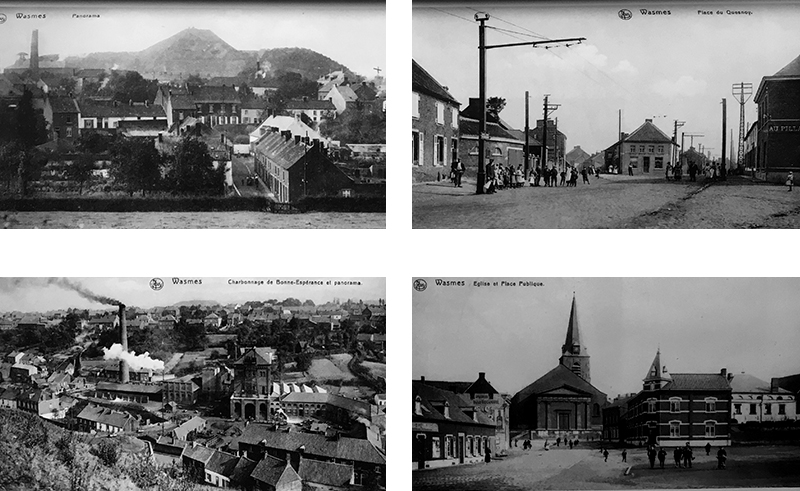
Top Left
Gives a good idea of the height of the spoil tips around Wasmes and how forces on the top of these mounds would have ‘commanded’ the areas they overlooked.
Top Right
The scene at a Wasmes tram stop. The tram lines are visible in the road as are the overhead power cables.
Bottom Left
The view over the charbonnage (charcoal factory).
Bottom Right
This is a view of the main church in the Place Public (Public Square). (See Gibbs’ map).
CHAPTER VI (pages 94, 95 & Annex ‘C’ page 562)
Just a week before the book launch of 7th April, 2017, one of the authors, Scott Flaving, returned a book to his local library near Wakefield. The book was about the First World War and a young library assistant, on receiving the book and noting its subject matter, mentioned that her great-great uncle had been in the Boer War with the 'Dukes’, and had been called up again for the Great War. Her ancestor was none other than 5833 Sgt William Spence of 2/DWR who features prominently in the 'Death of the Dukes'. He had led a bayonet charge which cleared a street in Wasmes allowing many 'Dukes' to escape from the town during their withdrawal from that area of the Mons battlefield. He was posthumously awarded the DCM for this action as, sadly, he died of wounds a few days later in the Wasmes Colliery 'Hospital', leaving a widow and two children
The Spence family, Barry and Alison Spence and their daughter Rebecca, attended the book launch at the Drill Hall, Huddersfield - Barry being Sgt William Spence's great nephew.
[See copy of article from the Yorkshire Evening Post (below) and, also, photographs from the Book Launch event].
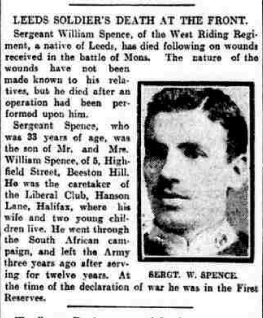
Thanks are due to the Spence family for the above article and photo.
Page 98
Photographs of M. Barbier and Mme Barbier who hid Capt Taylor (‘D’ Coy) until he was well enough to leave.
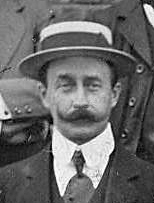
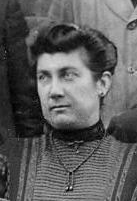
Page 102
A better photograph of the staff of Ambulance du Charbonnage d’ Hornu & Wasmes.
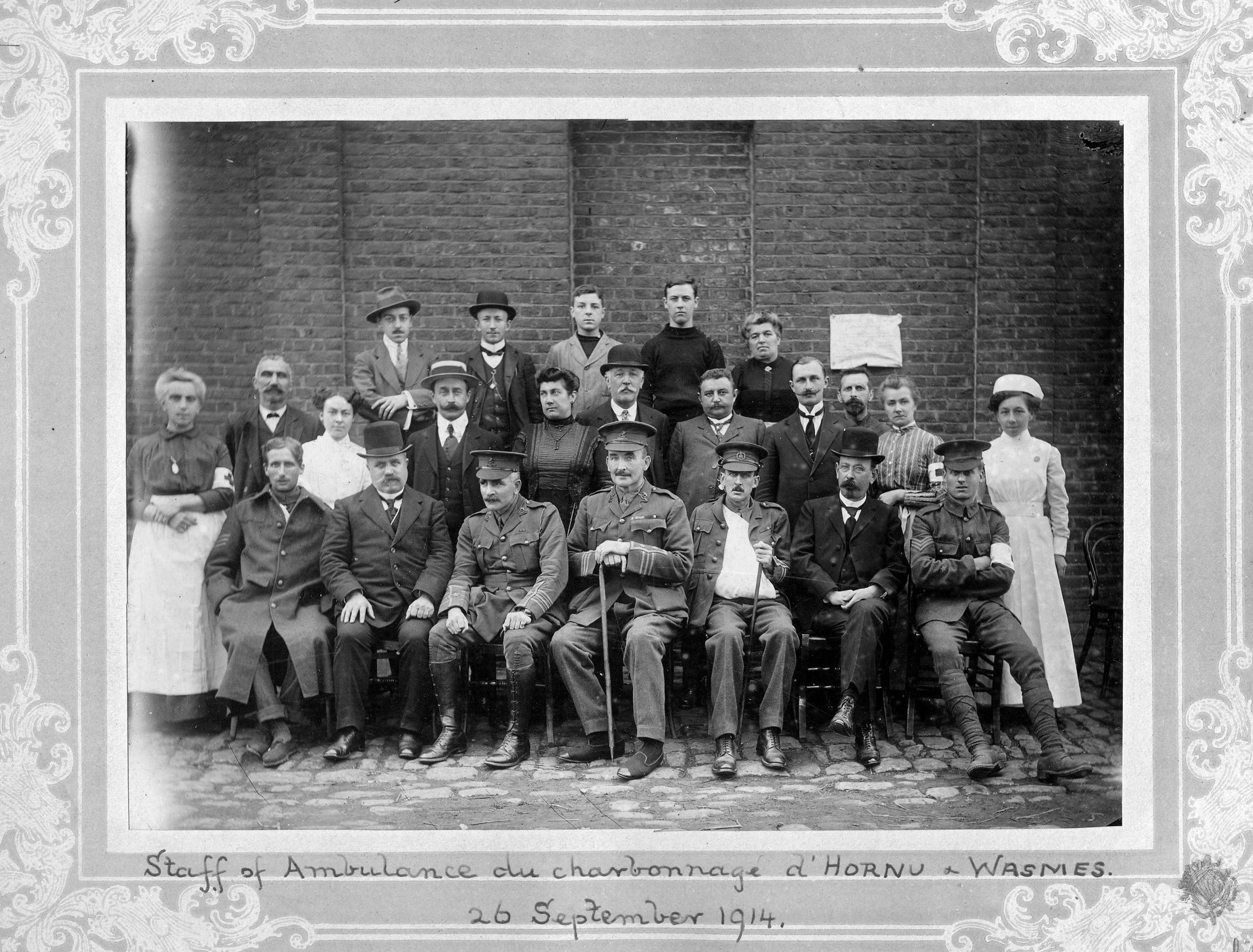
Page 104
Photograph of M. Hermann Capiau
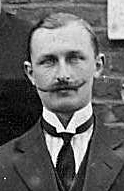
ANNEX ‘C’ -
Page 505 –
10500 Pte Banks, James Henry -
Born Bradford 3.9.1893
His great-niece, Margaret, regularly lays flowers on his grave at Hautrage Military Cemetery.
The story in the family was that he had his head blown off at Mons and this could tie in with the account of Harry Beaumont (page 80), also of C Coy who came across such a wounded man when crossing the bridge over the canal.
P 531 –
10657 Pte James Hickey –
An unpublished memoire by Lt O’Kelly suggests that Hickey admitted that he had signed up under a false name – his real forename being William (Bill). O’Kelly also wrote a long account of Hickey’s time as his batman which is contrary to Lt Henniker’s claim that Hickey was his batman!
P 532 –
6022 Pte Holmes JA –
He was killed by a shell on 20.10.14. He enlisted in 1899 and served in the Boer war 1900-02 - then as a Police Sgt in India in 1907. He became a reservist in 1911.
P 579 –
Photograph of the authors –



